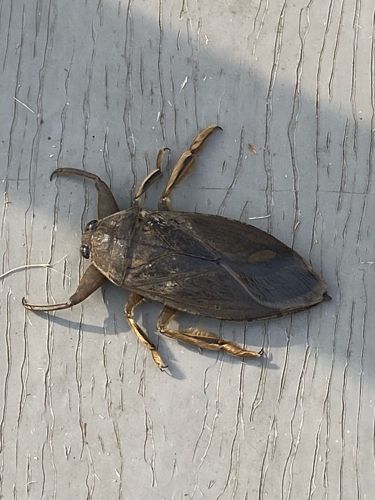Giant Water Bug
Scientific Name: Lethocerus americanus (or other species within Belostomatidae)
Order & Family: Hemiptera, Belostomatidae
Size: 2-4 inches (5-10 cm) in length, making them among the largest true bugs.

Natural Habitat
Freshwater ponds, lakes, and slow-moving streams with aquatic vegetation. They are often found near the surface or clinging to submerged plants.
Diet & Feeding
Predatory. They are ambush predators and feed on a variety of aquatic organisms, including small fish, frogs, tadpoles, salamanders, snails, and other insects. They inject digestive enzymes to liquefy their prey's internal organs before sucking out the contents.
Behavior Patterns
Nocturnal. They are strong swimmers and can also fly, often attracted to lights at night (hence the nickname 'electric light bug'). They are known for their powerful, painful bite when handled. Males of some species exhibit paternal care, carrying eggs on their backs until they hatch.
Risks & Benefits
Potential risks include a very painful bite if handled, though they are not venomous and their bite is not medically significant beyond the pain. They are beneficial as natural predators, helping to control populations of other aquatic insects and small vertebrates in their ecosystem. They are also curious creatures often encountered in natural freshwater environments.
Identified on: 9/20/2025